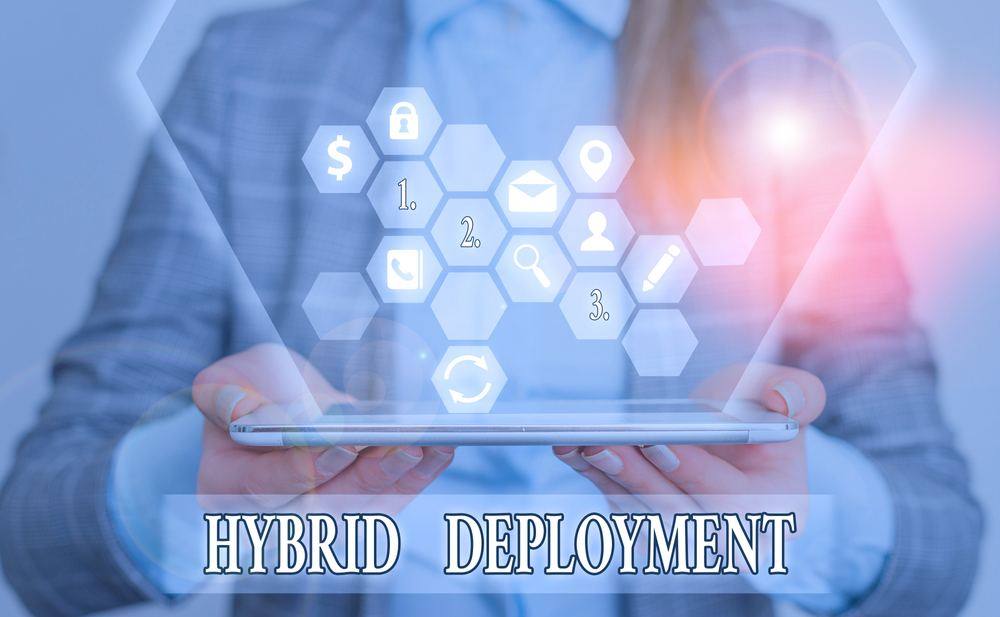Why Is Migrating To The Cloud So Confusing?

Migrating to the cloud has been a gradual process for many companies. Cloud adoption in some form or other was expedited by the global pandemic. As we edge into 2022, C-suite executives are under pressure to make key decisions – and many of have a degree of uncertainty.
The benefits and risks of cloud adoption are well-documented. However, the proliferation of content across the internet doesn’t make cloud migration any less complicated or confusing.
Gartner predicts global cloud adoption will continue to expand rapidly in 2022. The technology research firm forecast user spending on public cloud services to amass around $482 billion in 2022.
It is anticipated that 80% of businesses will have adopted the cloud by 2025. That doesn’t mean that cloud migration is right for everyone, or that there is only one cloud-computing solution.
While all cloud environments are scalable, provide high availability and are less costly than on-site servers, the success or failure of cloud migration will be determined by your cloud strategy.
Whether you’re attempting cloud migration for the first time or in the midst of troubleshooting your current migration plan, there are significant factors to consider.
First of all, let’s take a look at the benefits and risks of migrating to the cloud.
Benefits and Risks of Cloud Computing
Cloud technology helps businesses become more agile, resilient and less costly to operate. With access to immense computing power, essential tools and ready-made IT architecture, migrating to the cloud promises plenty of benefits.
However, moving to the cloud is not without its risks either. And it’s important to address the risks more closely than the benefits. Fortunately, there are solutions that enable you to navigate risk – or at the very least implement solutions that mitigate potential risks.
Benefits of cloud migration:
- Lower operating and maintenance costs
- Access to the latest software versions
- More agility to scale up or down
- Gives employees access to data from anywhere
- Promotes collaboration across remote teams
- Backup data in a secure environment
- Adds extra layers of IT security defences
- Optimises IT infrastructure
- Enables you to reach the market quicker
- Helps to make operations more flexible
- Potential for innovation
- Helps to keep businesses competitive
- Potential to increase productivity and profits
Risks of cloud migration:
- Data is hosted by a third-party
- Potential increase in security risk
- Lack of in-house expertise in cloud migration
- Challenges with cloud migration can cause downtime
- Businesses can still be held accountable for data breaches
- Potential loss of internet connectivity and availability to work files
- Cloud provider goes out of business
Common CEO Cloud Concerns
It’s clear that the number of benefits migrating to the cloud outweighs the risks. CEOs, quite rightly, would argue that the risks of migrating to the cloud will weigh heavier on their business than the risks. Shareholders may not agree, but CEOs do have a point.
The most common cloud concerns amongst C-level executives essentially comes down to five issues. Longstanding concerns are security risks, legacy IT and the lack of internal skills.

A report published by McKinsey also indicates that 80 per cent of enterprises say cloud spending is a challenge. Around 30% of their investment was wasted.
According to research conducted by Capita, 60% of UK businesses feel their cloud migration strategy is “over-promised and under-delivered” due to “unforeseen factors”.
C-suite executives also have to decide which type of cloud solution enables them to reimagine business operations and deliverables. When you don’t really know what the cloud is or understand its capabilities, these types of decisions are confusing.
It’s also worth bearing in mind that cloud technologies will continue to evolve. The second-generation cloud is still relatively young, but given the rapid pace at which technology advances these days, it’s advisable to consider the third-generation cloud (Hybrid-Hosting) in your migration planning.
The 2020 Accenture survey reveals that only 3 in 10 CEO’s are confident their cloud migration initiatives will deliver the targeted return. To date, only 37% of companies involved in the survey said they had successfully achieved the expected goals from their cloud initiatives.
Only five per cent reported they had not experienced any challenges during their cloud migration. Avoiding common issues is far easier when you have cloud specialists to help with the planning, implementation and cloud management.
First things first, let’s deal with cloud security.
Is Your Data Secure and Private in the Cloud?
With the increase in cybercrime and the legal consequences of a data breach, IT security is a legitimate concern. Despite the media attention on high-profile cyberattacks, SME’s should be able to avoid a data breach – providing you have a robust IT security strategy in place.
Cloud services play a role in cybersecurity by providing several layers of security that enable you to better protect your data.
Public clouds like Microsoft Azure, boast advanced data security controls such as firewalls, data encryption, database monitoring, access control, consistent security updates and auto-patching.
Cloud service providers can also help you improve the security of your data storage using various strategies including:
- Data back and recovery
- Configuring cloud applications (i.e user permissions)
- Tightening user access measures (setting passwords and two-way authentication)
- Securing endpoints on user devices
- Patch management
- Cybersecurity awareness training and dummy tests
- Remote monitoring
- Run security checks
There is little doubt that cloud security measures in the cloud are advantageous. However, privacy remains a concern.
It’s understandable for executives to worry about storing sensitive data in the cloud – especially if you are storing customer information. Legal compliance concerning data protection laws like GDPR has overcomplicated how data is stored.
The easiest way to avoid the risk of neglecting your data protection obligations is to avoid storing customer data in the cloud altogether. Hybrid cloud models are the most popular to date but they can be expensive. The third-generation cloud should resolve that issue as well.
What Type of Cloud Migration is Best for Your Business?
Migrating to the cloud does not offer cookie-cutter solutions. Your cloud strategy will be determined by your business needs, your existing IT infrastructure and your future goals.
A key consideration for C-level executives is to understand the strengths and weaknesses of each cloud model; Software as a service (SaaS), infrastructure as a service (IaaS), and platform as a service (PaaS).
SaaS
Software-as-a-service solutions provide integrated access to applications designed by third-party providers. Microsoft 365 is a prime example. The key advantage of SaaS is the software can be rolled out quickly and funded directly. It also has huge potential to promote innovation, collaboration and productivity.
IaaS
This is the most simple, flexible and cost-effective cloud computing model. IaaS enables you to rent storage servers rather than purchasing and maintaining your own infrastructure so is agile and highly scalable. The key advantage is the ability to increase your network capacity as and when needed and lower data storage costs.
PaaS
Businesses that want to create, host and deploy unique applications without significant upfront investment will benefit from cloud services that provide platforms as a service. It gives you access to operating software upon which you can customise applications needed to run your business operations efficiently. You are responsible for the servers, storage, and network management.
How Can Cloud Migration Help You Reimagining Your Business?
Cloud-native strategies have the potential to transform your business operations, increase revenue, enhance user experience, provide convenience for your customers, improve productivity and get products or services to market faster.
Migrating to the cloud will involve some degree of changing the way you run the business. How you reimagine operations to seize opportunities and take advantage of cost-efficiencies requires some understanding of how cloud technologies work.
We appreciate that may not be easy for C-suite executives with little knowledge of the potential cloud technologies offer. Fortunately, our IT consultants are cloud specialists and will be happy to discuss your goals and help you to implement a successful cloud strategy.
The Cost of Replacing Legacy Infrastructure
It’s understandable that C-level executives are not enthusiastic about investing in new technologies when you already have an IT infrastructure that serves your business as it is. There is an element of sticking with what you know here.
Accenture found that CEOs preferred to retain their legacy systems – despite being aware of their limitations in opposition to the potential cloud services offered.

Eventually, decision-makers won’t have any choice other than to adopt some form of cloud technology. For example, landlines in the UK will be obsolete by 2025. The most likely scenario is that traditional PSTN networks will be ubiquitously replaced with VoIP systems. VoIP is far more cost-effective than legacy systems.
On the one hand, there is a lesson to learn here. Cloud solutions are more cost-efficient – but only when they perform the tasks you need them to. One of the failings of cloud platforms to date is they don’t always provide tools that can match existing applications businesses rely on.
Naturally, companies want to retain software their employees are accustomed to, and more importantly, that perform the job they need to do.
Interoperability between new cloud platforms and legacy applications is a standard requirement – but one that far too often fails following a poorly planned cloud migration.
A common strategy has been the lift-and-shift strategy. This involves transferring your data from your in-house servers to the cloud without redesigning the operations workflow.
The idea behind the lift-and-shift method is to save cloud installation costs. However, direct transfers of legacy applications rarely run according to plan. Legacy software is not able to take full advantage of native cloud features and conflicting codes can render some features impotent. Glitches occur – which is annoying for end-users.
Compatibility issues ultimately negate the cost-efficiencies of lifting and shifting to the cloud in the first place. However, because the applications you already have are better than the tools cloud providers offer (editing software, for example), your IT architecture needs a redesign.
Hybrid cloud environments are the most common, and arguably the most efficient solution. In short, you get the best of both worlds and don’t have to replace all your existing tools. You have the advantage to pick and choose which software best serves your purposes.
Do You Have In-House IT Expertise?
In the modern paradigm, IT professionals are expected to deliver essential business services such as data storage, network maintenance, system security, and 24/7 customer service.
How a lack of IT expertise is a growing concern in the UK. The Guardian reports that a study undertaken by the Learning and Work Institute indicates that young people joining the workforce do not have the advanced digital skillset necessary to meet demand.
Another report conducted by ForthRev underlines how concerned HR executives are about securing talent acquisition. It is estimated that 81% of UK businesses will need to recruit IT support specialists from overseas over the next five years to fill the digital skills gap.
This lack of expertise will lead to business inefficiency, diminished service delivery, poor customer relations, and ultimately, a loss in revenue.
One solution is to train in-house IT professionals. However, this option is expensive and relies on retaining top talent that has the relevant skill pertaining to your business needs.
For most SMEs in the UK, turning to managed outsourced IT services is the most cost-effective solution. Together with access to cloud specialists, IT support firms can also deliver the latest technologies.
Managed service providers offer two types of IT support:
Fully managed IT services involves outsourcing your entire network to a third-party specialist.
Partially outsourced IT services involves adopting services that provide relevant deliverables to your business needs. Flexible services mean you only pay for the technologies you need as and when you need them and provide your in-house team with experts that can help them troubleshoot any issues that might arise.
Cloud Conclusion
For most companies, migrating to the cloud in 2022 is inevitable, and without the right support team could be a rocky journey. The cloud is too important for modern businesses.
The important factor is to have a plan in place that promotes your business operations, delivers an exceptional customer experience, enables your employees to work seamlessly in remote locations and delivers profits to shareholders.
A business without an efficient IT network, the potential for innovation and tools that foster productivity will struggle to retain a competitive edge. Teaming up with IT partners that give you access to cloud specialists is a cost-effective solution that enables your business to survive and thrive.
For more information about how migrating to the cloud can benefit your business and navigate the risks, contact a member of our knowledgeable IT support team.

